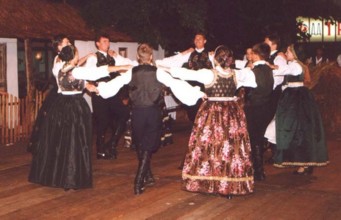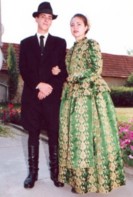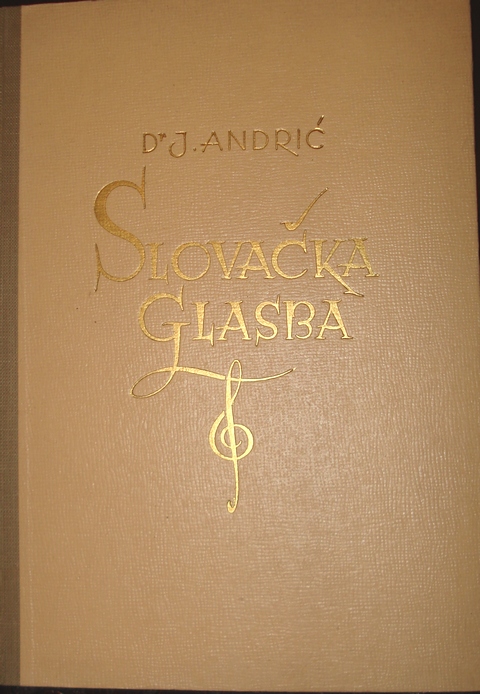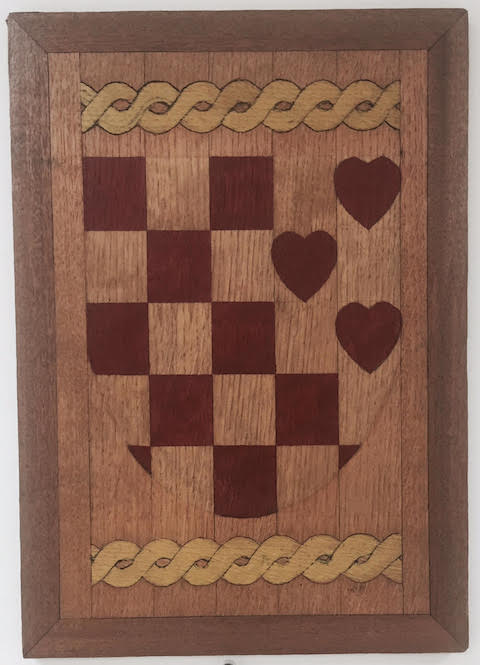Bunjevci Croats in Bačka
The presentation also extends to distinguished Croatians from Srijem and Banat.Ivan Antunović (1815-1888), Bunjevci Croat and bishop in Kalocsin Hungary, was oustanding Croatian writer.
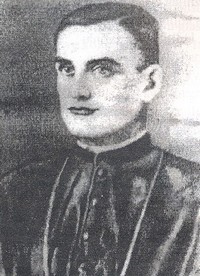
Ivan
Antunović, source Klasje
naših ravni,
Subotica 2001.
The Catholic Insitute for Culture, History and Spirituality in Subotica is bearing his name (Katolički institut za kulturu, povijest i duhovnost Ivan Antunović iz Subotice). Andrija Anišić objavio je 2013. svoju doktorsku disertaciju o naučavanju Ivana Antunovića o vjerskoj i moralnoj obnovi obitelji.
An important Croatian politician, general and nobleman, ban (governor) Josip Jelačić (1801-1859) was born in the town of Petrovaradin. It is little know that there is the so called Russian branch of the family of Jelačić's, about which Stjepan Radić, Croatian politician and martyr, wrote an interesting article "The Russian branch of our Jelčić's". The descendants of the Russian branch live, among others, in France, under the name of Iellatchitch.
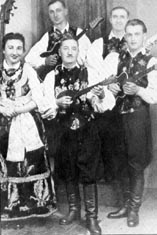 Pere
Tumbas - Hajo
(1891-1967), conductor, composer, and the famous tamburitza player, was
very active among Backa Croats in Subotica, which was his birthplace.
His greatest success was the sensational triumph at the "International
folklore festival" in Langolen
in Wales (Great Britain) in 1952, where his reduced 4 member orchestra
(normally 7 players) and 8 dancers won the first prize, among 16 best
folklore groups of the world (including the Russian balalaika group and
Spanish flamenco players). The administrative authorities in Belgrade
never gave him opportunity again to show his brilliant tamburitza play
outside of ex-Yugoslavia. Despite this, the Croatian Tamburitza
society from Pittsburgh, directed by Walter Kolar, performed throughout
the USA many songs arranged or composed by Hajo. In the journal The
Tamburitzan, directed by Walter Kolar
(Pittsburgh), Hajo has been represented as the most famous tamburitzan.
Pere
Tumbas - Hajo
(1891-1967), conductor, composer, and the famous tamburitza player, was
very active among Backa Croats in Subotica, which was his birthplace.
His greatest success was the sensational triumph at the "International
folklore festival" in Langolen
in Wales (Great Britain) in 1952, where his reduced 4 member orchestra
(normally 7 players) and 8 dancers won the first prize, among 16 best
folklore groups of the world (including the Russian balalaika group and
Spanish flamenco players). The administrative authorities in Belgrade
never gave him opportunity again to show his brilliant tamburitza play
outside of ex-Yugoslavia. Despite this, the Croatian Tamburitza
society from Pittsburgh, directed by Walter Kolar, performed throughout
the USA many songs arranged or composed by Hajo. In the journal The
Tamburitzan, directed by Walter Kolar
(Pittsburgh), Hajo has been represented as the most famous tamburitzan.
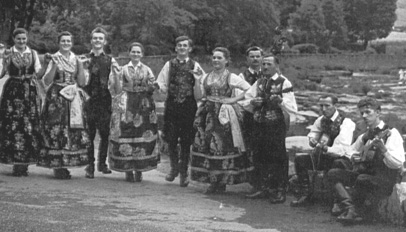
Pere Tumbas Hajo: Koncertno Bunjevačko kolo [MP3], Subotički tamburaški orkestar
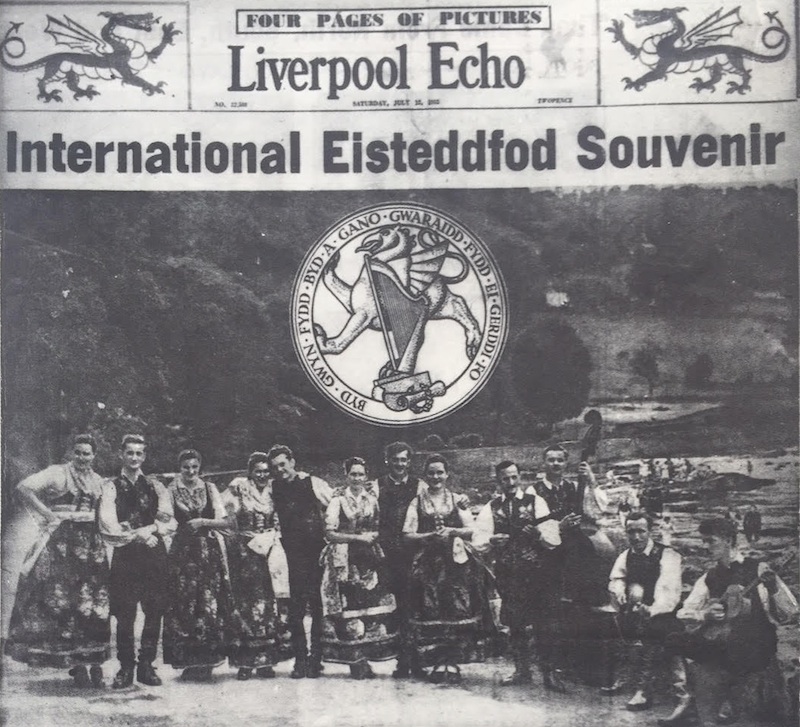
Pere Tumbas Hajo with his orchestra and dancers in Great Britain in 1952.
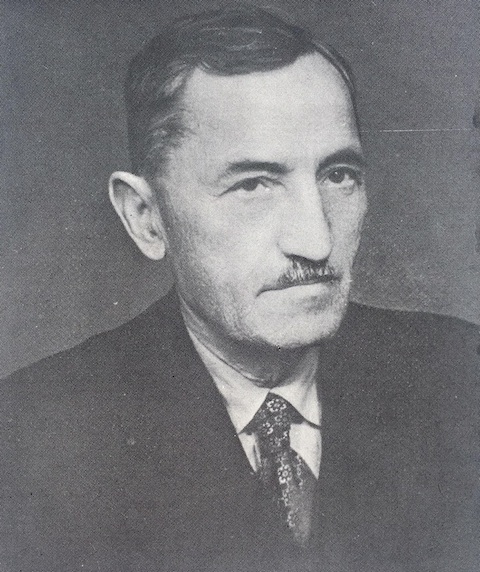
Pere Tumbas Hajo. Many thanks to Mr. Naco Zelić for the above two photos.
The Subotica Tamburitza Orchestra (Suboticki tamburaski orkestar) is the top quality orchestra of tamburitzans, founded in 1976. It is interesting that the original name was planned to be "Tamburaski orkestar Tumbas Pere - Hajo", but the then political structures of ex-Yugoslavia did not permit this name.
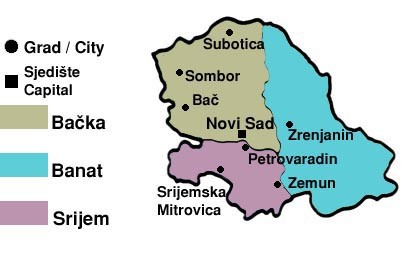
It is interesting that for the preparation of their costumes Croatian women in Backa used silk material from Lyon, France.
One of the symbols of Bunjevci Croats is a very beautiful song Kolo igra, tamburica svira, composed in the 19th century. The song is very popular.
Josip Andrić (1894-1967) is a figure with a wide range of interests.
- In music he created about 700 songs, an opera Dužijanca for tamburitza Croatian Bunjevci in Bačka, performed for the first time in Subotica in 1953,
- collected almost 2000 folk songs, he was conducting already at the age of 15.
- In literature, among the plenty of his books and brochures let us mention his history of Slovak music, the first ever written: Slovačka glasba, Hrvatsko-slovačko družtvo, Zagreb 1944.
- And also the first grammar of the Slovak language, ever written outside of Slovakia: Slovnica Slovačkog jezika, Hrvatsko-slovačko društvo, Zagreb 1942.
- he was an editor in chief in HKD Sv. Jeronima (Croatian Literary Society of St. Jerome) in Zagreb since 1921 till 1946.
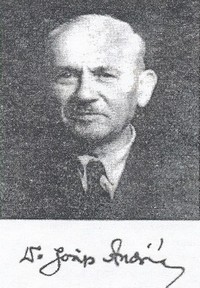
Dr.
Josip Andrić, photo from Klasje
naših ravni,
Subotica, 2001.
In his weekly "Obitelj" (Family) Josip Andric wrote articles against Hitler already in the thirties of the 20th century. During WW2 he was arrested by Gestapo, but after three months of prison, upon the intervention of the Slovak government, he had been released.
 |
An article about Josip Andrić in Hrvatska riječ, Subotica
Josip Andrić: Bunjevačka elegija (video)
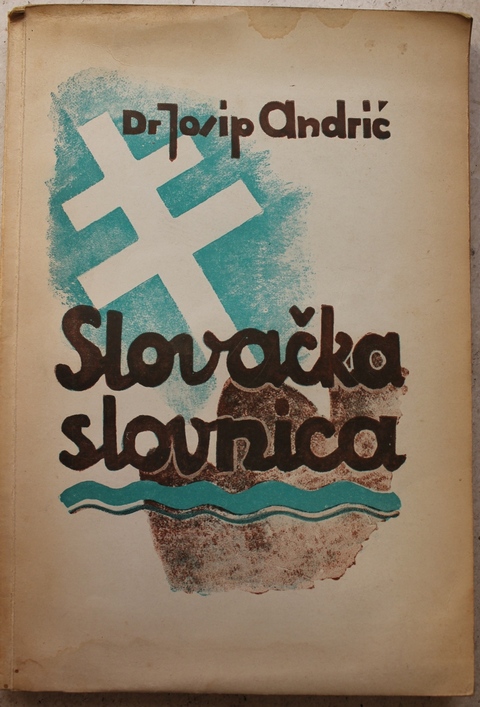
the first grammar of Slovak language, ever written outside of Slovakia; published by Croatian-Slovakian Society in Zagreb.
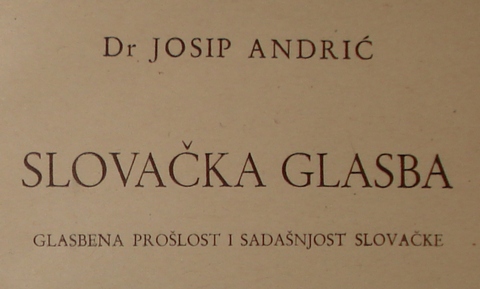
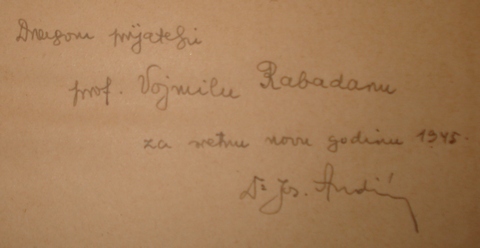
Dedication to dear friend prof. Vojmil
Rabadan for the happy new 1945.
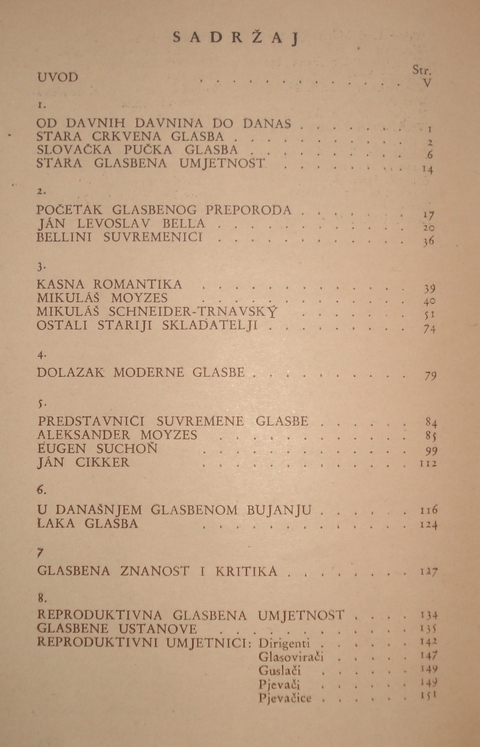
Many thanks to sister Berislava Grabovac of the Mary's Court in Lužnica near Zagreb for permission to take the photos of this book.
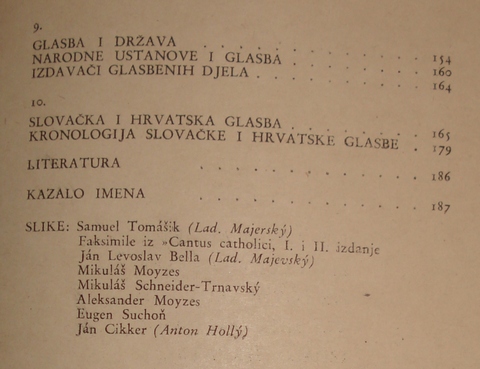
We owe to Josip Andrić our first information about the glory of the Irish early Christian civilization, the fact that not only the British, but also the Francs received the Christian religion from them. He belonged to the Croatian Bunjevci and Šokci. During many years, and especially since 1991, they have been going through the process of almost complete ethnic and cultural extinction, with a rate and violence unknown in Europe after 1945. Only in the period between 1971 and 1991 (before the Greater Serbian aggression!) the number of the Bunjevc and Šokci Croats dropped from 140,000 to 74,000. It should be noted that, according to Jovan Erdeljanović, in 1930 in the region of the so called Vojvodina (the name imposed in 1945 during Communist Yugoslavia) there were 400,000 Croats, see [Sekulić, Bački Hrvati]. In this region the Croats had no any national minority rights until 2002.

More about Josip Andrić can be seen in [Matija Evetović, pp. 563-565].

Bust of Josip Andrić with Croatian Coat of Arms
and tamburica.
(from the title page of Josip Andrić
1894-1967, Zbornik, published
by St. Jerome in Zagreb)

Medal of Dr. Josip Andrić, awarded by Croatian Composers' Society

Croatian Coat of Arms in
the city of Sombor, the City Hall, 1808, and
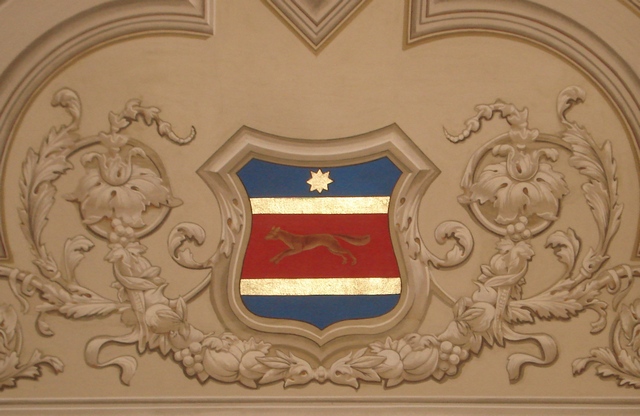
the Coat of Arms of Slavonia, and
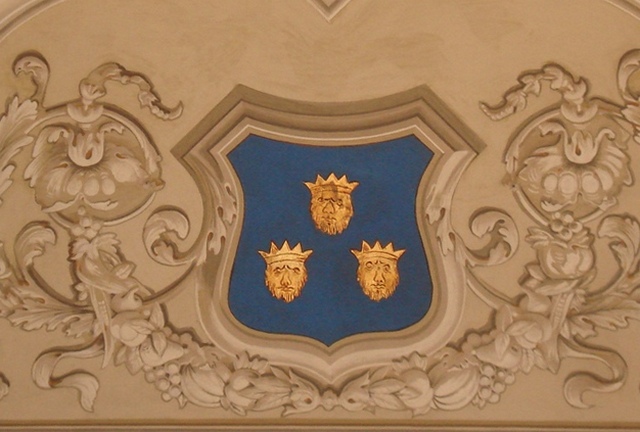
the Coat of Arms of Dalmatia.
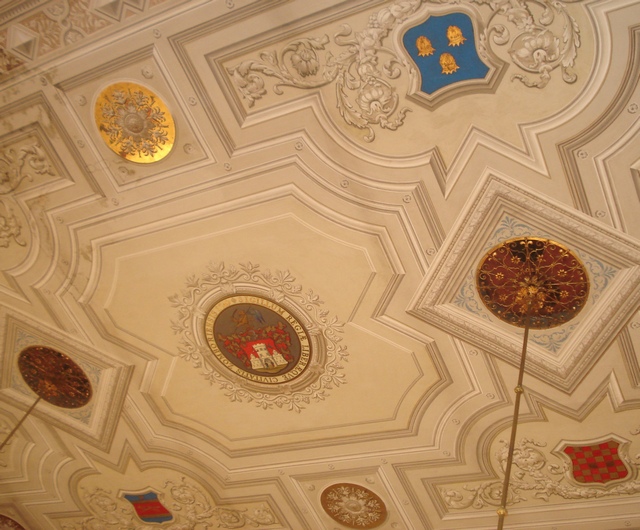
The ceiling of the City Hall of Sombor with the Coat of Arms of the the
city of Sombor in the middle,
surrounded with Coats of arms of the United Kingodm of Croatia,
Slavonia and Dalmatia
(bottom right, left, and up on the right respectively; missing on the
photo, up on the left, Erdely's Coat of Arms)
More information about Croatian Coats of Arms.
The name of "Vojvodina" (Serbain name for "dukedom") has been imposed in 1945, although the Croats in Backa never had "vojvoda". In the period of 1930 - 1941 the Croats in Bačka were using the name of Bačka Hrvatska (information by Dr Ante Sekulić, see [Sekulić, Bački Hrvati]). It is interesting that near the town of Subotica there is a village called Hrvatski Majur (= Croatian estate).

Blaško
Rajić
(1878-1951), source
Klasje naših ravni, Subotica 2001.
According to Blaško Rajić (a priest and General Vicar of the Bačka Bishopric), in the period of 1918 - 1924 Subotica had 100,000 inhabitants, out of which 80,000 were Croats, 2,000 Serbs, 1,500 Hungarians, and the rest were Jews, Germans and others (see [Sekulić, Bački Hrvati]).
According to the 1910 recension, Subotica then had 94610 inhabitants, while Croatia's capital Zagreb had 79038. See [Prćić, p. 21]. The same source (on p. 133) provides the following data, for which the city of Subotica can be proud of:
- it had first high school (precursor of future gymnasium)
- in 1747 the first printing house in 1844
- the first tennis play was organized
- in 1878 the first cinema play was organized
- in 1899 the first soccer club (Bacska) was founded
- in 1901 had the first airplane flight
- in 1910 had the first permanent cinema in 1919.
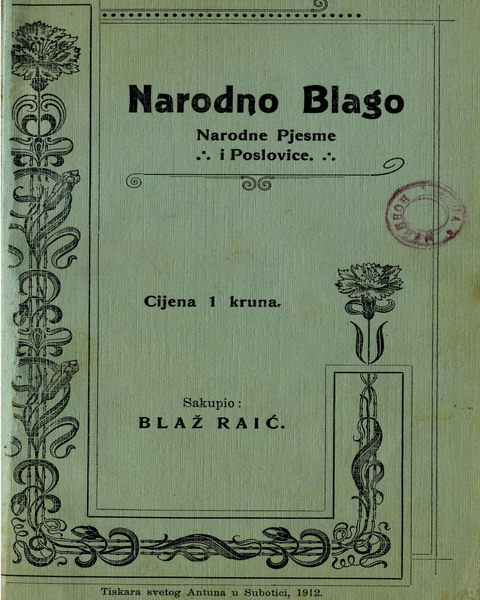
Blaž
Raić: Narodno blago,
Subotica 1912,
134 pp.
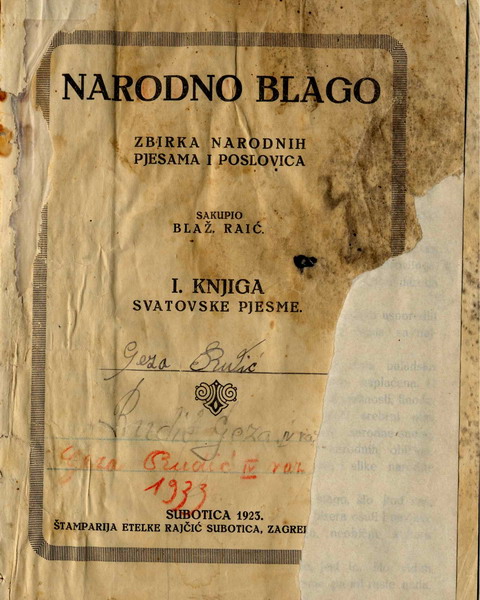
Blaž Raić: Narodno blago,
Subotica 1923.
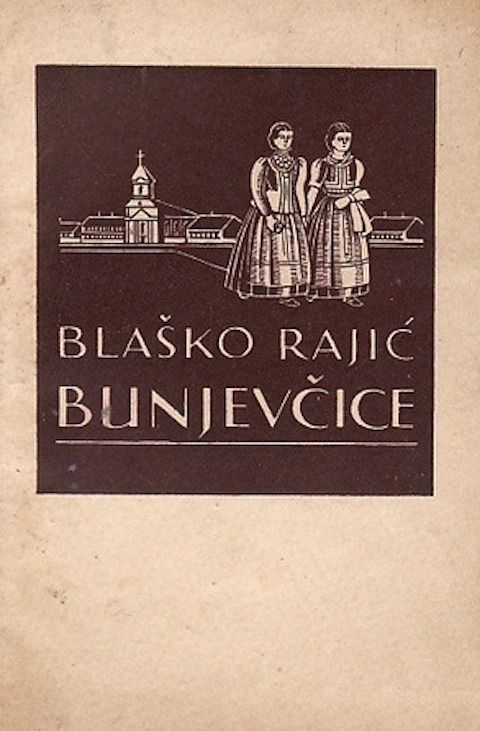
Blaško Rajić: Bunjevčice,
illustrated by Zdenka
Sertić, distinguished Croatian painter,
HKD Sv. Jeronim, Zagreb 1937.
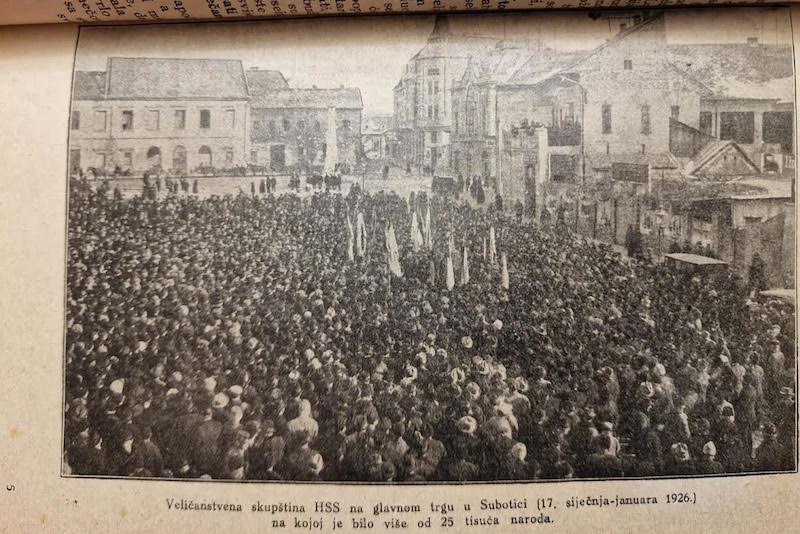
Magnificent assembly of HSS (Hrvatska seljačka stranka, i.e., Croatian Peasant Party) at the main square in Subotica,
17th January 1926, where more than 25000 people participated. Photo published in Božićnica 1927, Zagreb.
The then president of the party was Stjepan Radić (1871-1928), who was two years later mortally wounded in the Belgrade parliament of ex-Yu.
The first opera for children in history was composed by Franjo Štefanović, a Croatian composer educated in the city of Zagreb. Its title was "Šumska kraljica" (Forest Queen). The corresponding text (to which the opera was composed) was written by Mihvol Peitz. Premiered in 1921 in the city of Petrovaradin, it is still popular among children. Information by Zov Srijema, prosinac 2016, str. 4-5 (Glasilo Zajednice protjeranih Hrvata iz Srijema, Bačke i Banata).
Aleksa Kokić (1913 - 1940) is a well known priest and a poet born in Subotica as a Bunjevci Croat.
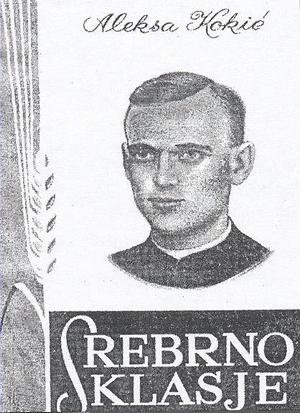
Aleksa
Kokić: Srebrno
klasje, photo from Klasje
naših ravni, Subotica 2001.
In his verses explained us the following:
| I
nek dođu dani krvavi, teški i crni, Oblaci makar će gusti citavo nebo nam skriti, I onda svi ćemo hrabro gromovnim glasom zborit: Hrvati bili smo uvijek - Hrvati odsad biti! |
These verses have been carved on a marble tablet in Subotica (in Pučka kasina) in 1936, on the occasion of 250 years of the arrival of Bunjevci Croats to Bačka.
100. obljetnica rođenja Alekse Kokića (video)
Albe Vidaković (1914 - 1964), born in the town of Subotica in Bačka, was an important composer of Croatian church music. He also collected Croatian musical folklore. The Institute for Church Music in Zagreb is named after him. He composed three Glagolitic masses, inspired by Croatian Glagolitic singing.
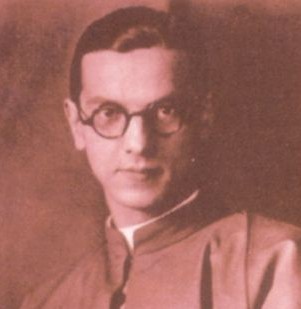
Collegium
Musicum Catholicum - Albe Vidaković (video):
Agnus Dei iz mise
Caeciliane
Ulomak sa koncerta u subotičkoj katedrali sv.Terezije Avilske
14.06.2009., Collegium Musicum Catholicum
- mješoviti zbor,
Kornelije Vizin - orgulje,
Miroslav Stantić - dirigent.
Live performance of Albe Vidaković's ˝Fantazija i Fuga˝ (video) by organist Marija Lončar Strohm
Albe Vidaković belonged to Bunjevci Croats around the city of Subotica. Bunjevci Croats are recognizable by their beautiful ikavian dialect and folklore which is very close to that of Croatian north-east. When he was born, Subotica was the city with the second largest number of Croats after Zagreb, our capital. Even more interesting is the fact that in the period 1900-1904 Subotica was the largest Croatian city, with more Croats than Croatian capital Zagreb! For more information see [Jasna Ivančić].
Near the town of Subotica there is a village called Mala Bosna (Small Bosnia).
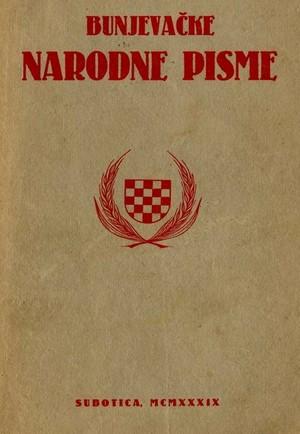
Ive
Prćić: Bunjevačke
narodne pisme (Bunjevac folk
poems), Subotica, 1939.
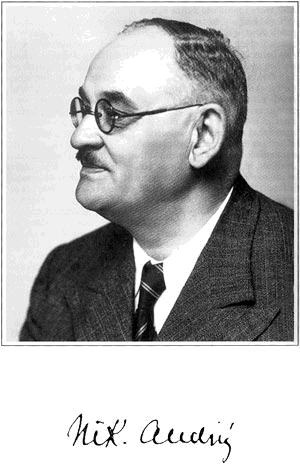
Nikola
Andrić (1867-1942),
photo from www.matica.hr
Nikola Andrić (1867-1942) was born in the city of Vukovar. He was a philologist, writer, editor, and translator, mainly from French, German and Russian (about 60 novels). Besides his native Croatian, he was fluent in seven languages. In 1911 he published his linguistic work Branič jezika hrvatskoga (Defender of Croatian language). For more details see www.matica.hr . Nikola Andrić published an important monograph [Hrvatske narodne pjesme] (Croatian folk poems), which contains a relatively large collection of groktalice [PDF], today almost completely forgotten type of poems. The name of groktalica is very little known. Since I had opportunity to listen to groktalica singinig by late Mrs. Cecilija Milanković (1926-2000) from Subotica when she visited Zagreb on several occasions around 2000, I decided to add a few lines about these very tender and poetic songs. According to her own words, even in Subotica a very few people know this way of singing.

Cecilija
Milanković: Two
blowballs, source Klasje
naših ravni, Subotica 2001.
Groktalice, according to academician Ante Sekulić, are poems of balladic content accompanied by singing (Groktalice su pjesme baladičnog sadržaja praćenog pjevanjem, see [Lipe Riči, p. 4]).

Ive
Prćić (1894-1959), source
Klasje
naših ravni, Subotica 2001.
They were published in above mentioned monograph by [Nikola Andrić], and the poems had been collected by Ive Prćić during many years.

Dr.
Nikola Andrić: Bunjevačke
groktalice, [PDF
~50 pp]
The origin of the name groktalica is the following: for the one who sings nice (lipo piva) in Backa it is said that his voice is trembling, i.e. grokti in Croatian. It is interesting that in some parts of Slavonia (i.e., on the North-East of Croatia) the groktalice are also known under the same name.
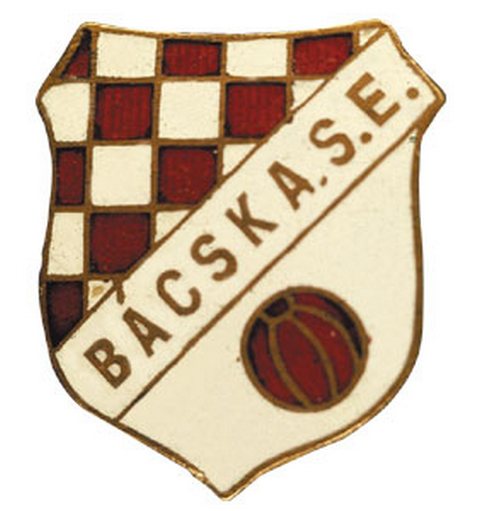
Bacska, i.e., Bačka football club in Subotica, founded in 1901.
Note that it was designed according to Croatian
Coat of Arms.
This photo is appearing on the cover page of [Dražen
Prćić]
and on nogomet.lzmk.hr.
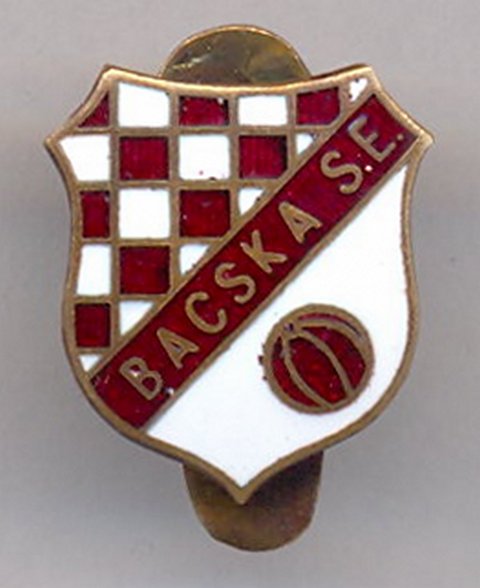
The oldest Croatian football clubs was FC Bačka, founded in Subotica in 1901, playing in the then Croatian league.
I adore the art of straw weaving of the slamarke among the Bunjevci Croats in Backa. At the 1976 international exhibition of naive art in Moscow Ana Milodanović (from Zednik) won the gold medal with her work with straw weaving. Also, Kata Rogić (from Đurđin) had exceptional honour to present her work to Pope Paul the VIth. See [Zelić] and Slamarska sekcija iz Tavankuta.
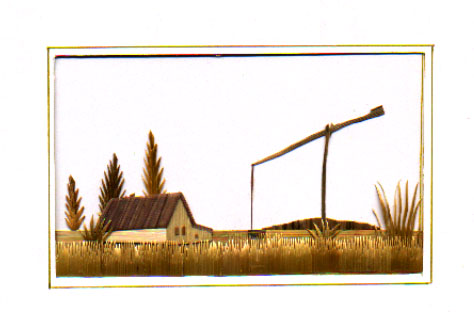 |
Bunjevci Croats from Backa and their Christmas traditions expressed in straw and cakes
It is interesting that Bunjevci Croats have two different names for grandmothers: majka for mother's mother, and nana for father's mother.
In 1928 Ivan Meštrović sent four recommendation letters to his influential friends in Croatia in which he asked to help the Croatian Youth Society BUNJEVAC from the city of Subotica to visit the land of their grandparents - south of Croatia and BiH. As he stated, Bunjevci Croats in Bačka have preserved the character of their grandparents in their ikavian speech and customs. See "Marulić", 5/1998, 908-911.
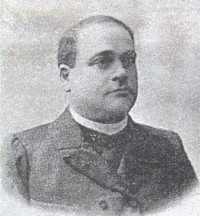
Ante
Evetović Miroljub, photo
from Klasje
naših ravni, Subotica 2001.
Ivan Meštrović carved the bust of Ante Evetović Miroljub, poet and priest in Subotica. It was placed in front of the Subotica cathedral in 1936, removed during the Hungarian occupation in 1940, and placed there again in 1996. Mestrovic also carved the bust of Ambrozije Boza Sarcevic, lawyer and cultural worker.
Ivan Sarić, constructor of airplanes had been flying in Subotica already in 1913 (only 10 years after brothers Wright, and three years after Slavoljub Penkala in Zagreb).

Ivan
Sarić
with his airplane in
Subotica,
source maketarstvo.net

Professor
Gaja Alaga on the
left, a member
of Croatian Nobility. Source www.knjiznica.phy.hr
Among distinguished Bunjevci Croats we mention also Gaja Alaga, theoretical physicist of international reputation, and a member of Croatian Nobility from Bačka.
Paško Rakić (1933) is outstanding international expert in neurobiology. He was born in Ruma, Srijem, and his parents come from the region of Lika in Croatia (this information courtesy Tomislav Žigmanov). Professor at Yale, USA, educated at the University of Belgrade (M.D. and Ph.D.), he wrote the following: Both [science and art] want to find some meaning or order in the large picture of chaos. He is a member of the National Academy of Sciences, USA, the American Academy of Arts and Sciences, and of other national institutions, recipient of numerous honours throughout the world, including Croatia.
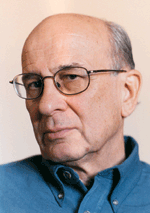
Paško
Rakić
(photo from A lively debate about
brain’s capacity for
renewal)
"I consider Pasko to be one of the most brilliant neuroscientists not just of this generation but in the history of neuroscience," says Susan Hockfield (Nat. Med. 11, 110; 2005), former provost of Yale and now president of the Massachusetts Institute of Technology. "What he's contributed to neuroscience is really on the order of Cajal or Golgi [Nobel Prize winners, 1906].", see Nature Medicine. His wife Patricia Goldman Rakic, who tragically died at the car accident in 2003, was also outstanding neouroscientist. Both of them are founding editors of the prestigeous scientific journal Cerebral CORTEX, Oxford. Professor Pasko Rakic maintains a fruitful collaboration with his colleagues in Croatia.
Neuroscience in Croatia - PDF, with more detailed information about Pasko Rakic and Kresimir Krnjevic. The source of this short biography is here.
Ivan Gutman, born in the city of Sombor, is distinguished Croatian expert in Mathematical Chemistry, prolific author of more than 1200 scientific articles, a member of editorial boards of numerous professional journals, professor of Physical Chemistry at the University of Kragujevac. He has two PhD's: in Chemistry (from the University of Zagreb) and in Mathematics (from the University of Belgrade). Among his monographs we mention
- A. Groavac, I, Gutman, N. Trinajstic: Topological Approach to the Chemistry of Conjugated Moleculs,
- Xueliang Li, Ivan Gutman: Mathematical Aspects of Randić-type Molecular Structure Descriptors, Mathematical Chemistry Monographs, University of Kragujevac, 2006

Ivan Gutman lecturing about hexagonal systems
at the Department of Mathematics of the University of
Osijek in 2007
Professor Gutman is a member of the Intenational Academy of Mathematical Chemistry, of the Academy of Nonlinear Sciences in Moscow and of Academia Europaea.

Professor Ivan Gutman lecturing about the history of Chemistry for high
school students
in the town of Tavankut, in the region where Bunjevci Croatians live.
Stevan Horvat was distinguished Croatian wrestler, twice the world champion in the category up to 55 kg: in 1963 in Helsingborg, Sweden, and in 1966 in Toledo, USA. Subsequently he was instructor and coach of national wrestling teams of Japan, USA, Guatemala, Honduras, Slavador and the Netherlands. More information can be seen in the Leksikon podunavskih Hrvata - Bunjevaca i Šokaca, part 9 (H), pp. 62 and 63. In 2012 a bust was unveiled in his honour at the University of Novi Sad. The meaning of his second name, Horvat, is just - Croat.
Rajko Ljubič is a film director from Subotica, and author of numerous documentaries and short movies that deal with the life of the Bunjevci and Šokci Croats. He donated many of his flms to the Catholic Institute for Culture, History and Spirituality "Ivan Antunović" (Katolički institut za kulturu, povijest i duhovnost Ivan Antunović ) in Subotica.
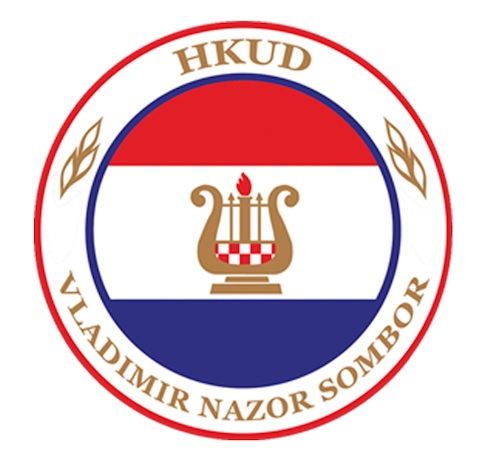
Croatian
cultural society Vladimir Nazor, town of Sombor
Very important role in Croatian Christmas family tradition has the day of Materice (materitse), which is celebrated on the third Sunday of Advent, and is dedicated to all Mothers. The following Sunday, just before Christmas, is called Oci (otsi) or Očići (ochichi), and is dedicated to all Fathers.
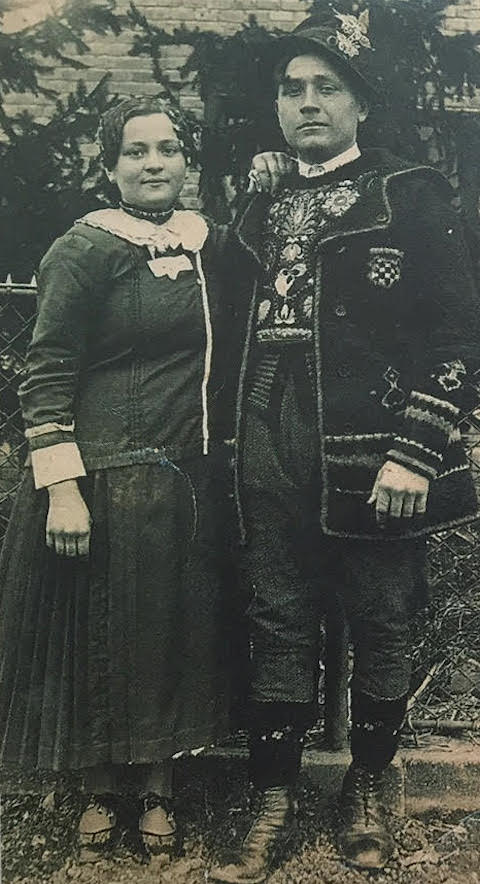
Photo taken between the two World Wars in the village of Kukujevci
in Eastern Srijem.
The suit of the man contain Croatian Coat of Amrs. Photo by Hrvatska
matica iseljenika, Zagreb.
The costume below, also nicely decorated with Croatian Coat of arms, is
from the same village.
Between the two World Wars, the village had a vast Croatian majority of
89%.
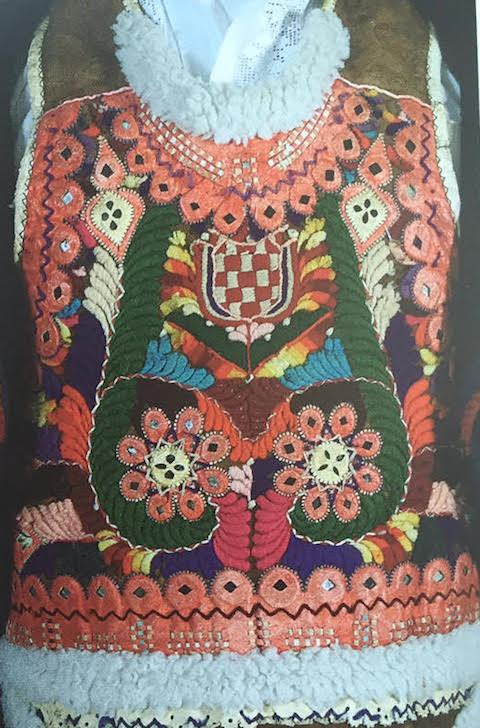
The man is wearing Croatian Coat
of Arms on his suit.
We would like to illustrate the position of Croats in the present Backa. An important poet Jakov Jašo Kopilović (1918 - 1997), born as a Bunjevac Croat in the city of Subotica, refused to change his nationality for membership in the Serbian Academy of Sciences (SANU, Belgrade), as it has been offered to him. Information by his closest relatives, and by prof. Joja Ricov, his personal friend (Joja Ricov is a poet, laureate of international prize "Golden Partenopa" and "Knight of Art for 1997", conferred by The Universal Academy "Neapolis" for fine arts, sciences and literature in Naples, Italy; member of Sindicato Libero Scrittori Italiani di Roma; a close friend of Italian Nobel prize winner Salvatore Quasimodo).
 |
LIPA
NAŠA
Lipa
naša Lipa
naša Lipa
naša Lipa
naša J. Kopilović |
In order to split and divide the Croatian community in Backa, the regime of Milosevic invented a new national minority in 1997, called "Bunjevci", giving them all national minority rights, and persuading them to deny their Croatian identity by police terror and forced mobilization to Kosovo. It must be said that the brutal methods employed by Milosevic are very successful. In 1997 new birth certificates have been issued for the Croats in the region Backa and Srijem in which their nationality has been simply changed to Serbian, i.e. old birth certificates have been falsified. Those Croats who refused to change their national name never had, and still do not have any national minority rights in Backa. For comparison, the Serbs in Croatia have their schools, while this right has been denied to a still relatively large Croatian community in Backa. Contrary to the Croats, a very small community of only several thousand Ukrainians in the Danube region has the usual national minority rights - schools, admission to radio, TV, press, state support. In October 1999 the authorities in Belgrade refused to issue visa for Cardinal Franjo Kuharic, retired Zagreb Archbishop, who planned to visit Croatian Catholics living in Backa. It was only by the end of 2002 that the situation began to improve a little - a few Croatian classes for children were opened, and cultural societies of Bunjevci Croats.

Jakov Jašo Kopilović


Jakov Jaša Kopilović (1918-1997)
Many thanks to Mr. Naco Zelić for the photos.
Matija Dulić
from the private collection of Mr. Naco Zelić
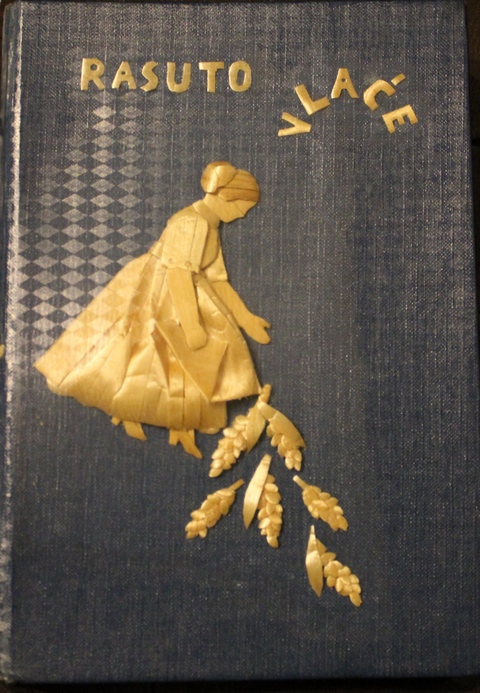
Poetry notebook by Matija Dulić, that she decorated with her straw-weaving.


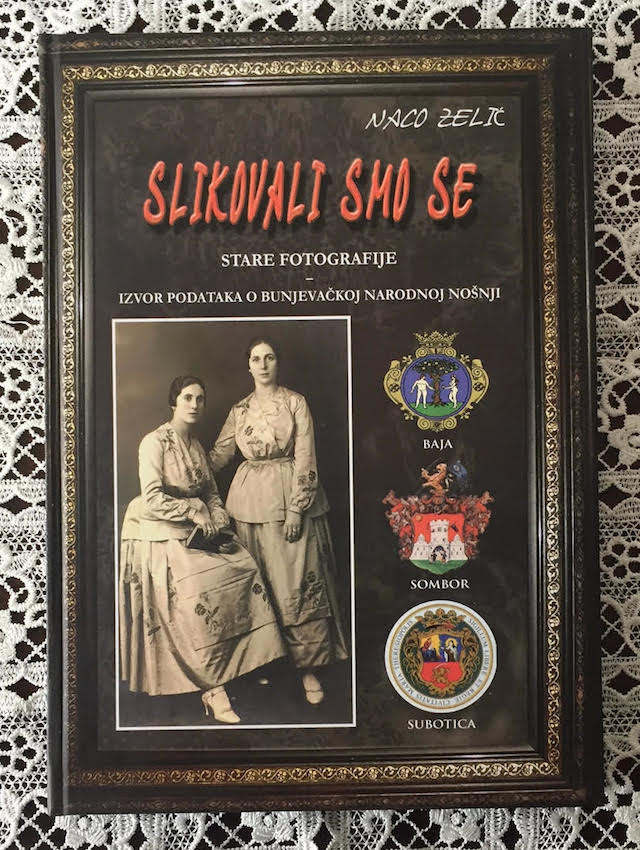
Photo-monograph by Naco Zelić: Slikovali smo se (We have been photographed)
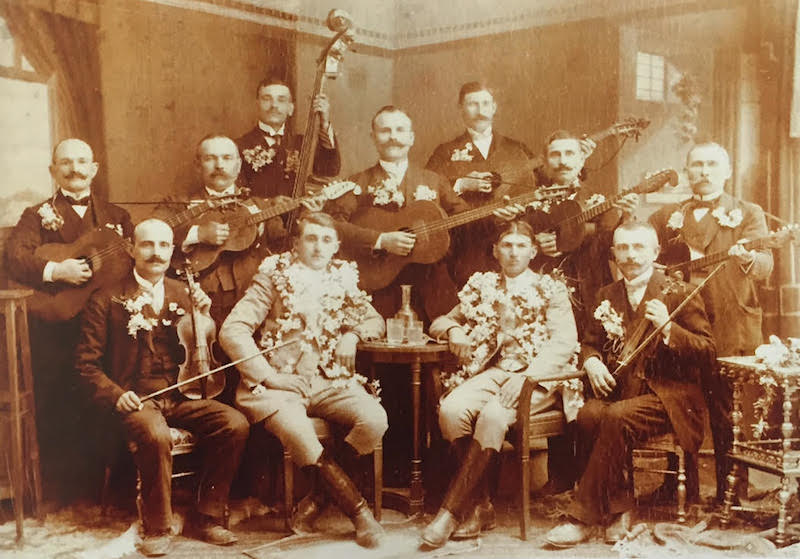
Polivači accompanied with tamburitza orchestra, Subotica 1914. Source Naco Zelić: Slikovali smo se.
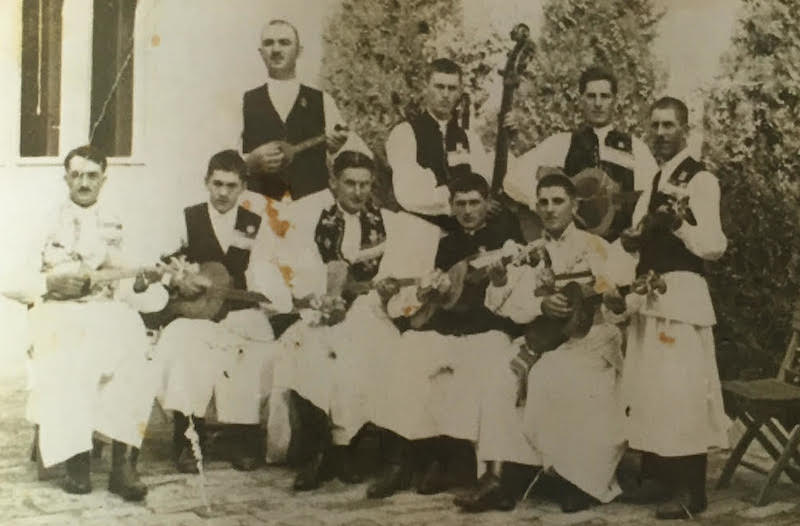
Tamburitza players from Tavankut 1938. Source Naco Zelić: Slikovali smo se.
Many thanks to Mr. Naco Zelić for permission to reproduce these photos here.
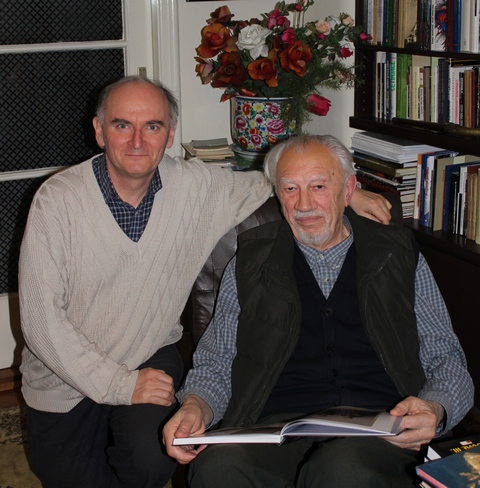
Mr. Naco Zelić, distinguished Croatian publicist, lawyer and diplomat, on the right,
born in Subotica (1930), in his appartment in Zagreb, with Darko Žubrinić.
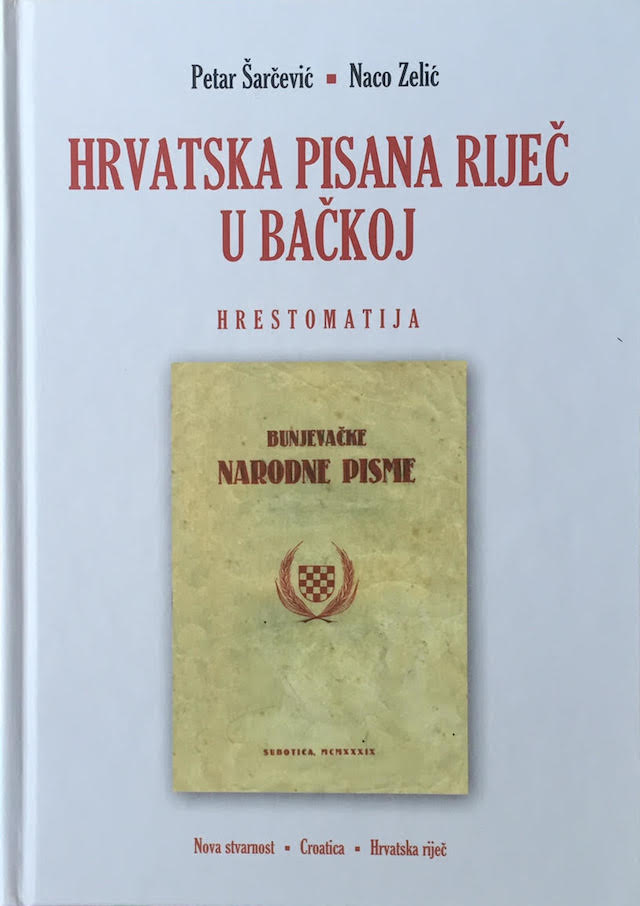

Mr. Naco Zelić (Zagreb) delivered a short speech [MP3] in Croatian, on the occasion of publishing
zabilježena je malo poznata pojava hrvatske glagoljice u Bačkoj početkom 16. st. Radi se o glagoljičkom potpisu Grgura Horvatovića:
Potpis Grgura Horvatovića, pisan na hrvatskom jeziku i glagoljicom, nalazi se u pismu od 26. siječnja 1517. u Hajszentlőrincu kod današnjeg Santova. Radi svoje važnosti, citirajmo manji dio iz navedenog članka (Bara, 2017.: str. 26): "O prisutnosti nižeg hrvatskog plemstva u okolici Sombora nam svjedoči pismo Grgura Horvatovića, koji je prema pridjevu imao vjerojatno posjed kod današnjeg Santova (Gregorius Horwath de Marthartzantho), upućeno Iohannesu de Wardaiu datiranog 26. I. 1517. u Hajszentlőrincu, nedaleko Sombora. Za razliku od podataka o tadašnjim doseljenicima koje uglavnom drugi imenuju etnonimom „Horwath“ u slučaju Grgura Horvatovića riječ je o osobi koja ostavlja drugačiji trag. Ono što svjedoči o njegovom podrijetlu je njegov potpis glagoljicom u hrvatskom jeziku ''to pisa Grgur Horvatović''. Pridjev „de Marthartzantho'' (Fekete Nagy 1979: str. 425) upućuje da je već neko vrijeme boravio na tom području Bačke.''
Prema osobnoj informaciji koju sam dobio ljubaznošću Maria Bare, pretpostavlja se da se grad Marthartzantho nalazio sjeverozapadno od Sombora u smjeru današnjeg Santova, gdje je Grgur Horvatović imao svoj posjed. Izvorni dokument njegova glagoljičkog potpisa može se vidjeti na mrežnoj stranici
https://archives.hungaricana.hu/en/charters/283138/?list=eyJxdWVyeSI6ICI4OTA4NSJ9 DIPLOMATIKAI LEVÉLTÁR (Q szekció) • Családi levéltárak (P szekcióból) • Esterházy család hercegi ága, Repositorium (Q 67) • 89085 ili skraćeno DL-DF 89085.
Latinička transkripcija glagoljičkog potpisa Grgura Horvatovića, koju je napravio je Ladislav Hadrovics, objavljena je u malo poznatom djelu (Nagy, 1979.: 425-426). Glagoljica u Bačkoj, i to još iz godine 1517., predstavlja vrlo dragocjeno otkriće. Zahvaljujem Mariu Bari na ovim podatcima.
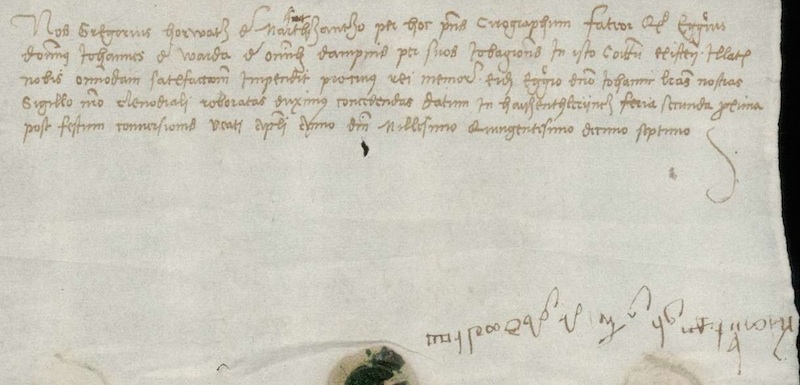

Osmi broj Godišnjaka za znanstvena istraživanja Zavoda za kulturu vojvođanskih Hrvata objavljen je koncem srpnja 2017. godine. Na 352 stranice Godišnjak donosi trinaest znanstvenih i stručnih radova koji obrađuju razne aspekte društvenog života Hrvata u Vojvodini, u prošlosti i sadašnjosti. U Godišnjaku je doc. dr. Mario Bara s Odjela za sociologiju Hrvatskog katoličkog sveučilišta u Zagrebu objavio članak kojim pojašnjava pojavu glagoljičkog podpisa u Podunavlju. Radi se o riječima pisanima glagoljicom, hrvatskim jezikom:
u pismu datiranom 26. siječnja 1517. godine, dakle prije 500 godina! Kao pisani spomenik ovaj potpis možda nema neku težinu, ali zapis na narodnom jeziku i upotreba glagoljice sjeverno od Gvozda i Kupe bili su rijetki pa su i sačuvani glagoljički spomenici malobrojni. Stoga je prisutnost glagoljičkog pisma u Bačkoj itekako važna.
Izvor www.croatianhistory.net/glagoljica/novosti/novosti24.17.11.pdf
Pasionska baština Hrvata u Podunavlju, IX, Zagreb - Subotica, 2013, 500 pp.,
additional information and here
(Passion Heritage of Croatians in the Danube Region)
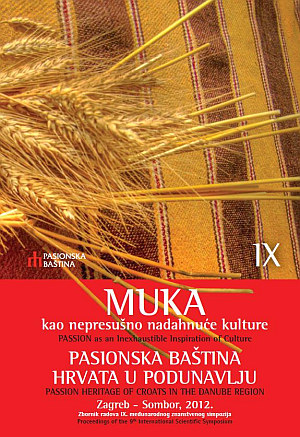
According to personal information by Mr. Naco Zelić, during a short period from 1952 till the end of 1958, about 5000 (five thosand) of Croatian pupils were attending Croatian schools in Bačka: there were four primary schools in the city of Subotica, and three in the towns of Đurđin, Tavankut and Žednik. In the years arround 2015, this number has been reduced to only one primary school in Subotica, with less than 150 pupils, where approximately 30 pupils are inscribed each school year.
The Bunjevci Croatians have published a relatively rich collection of books: until 2017, about 1400 titles in various fields have appeared (information by the courtesy of Mr. Naco Zelić).
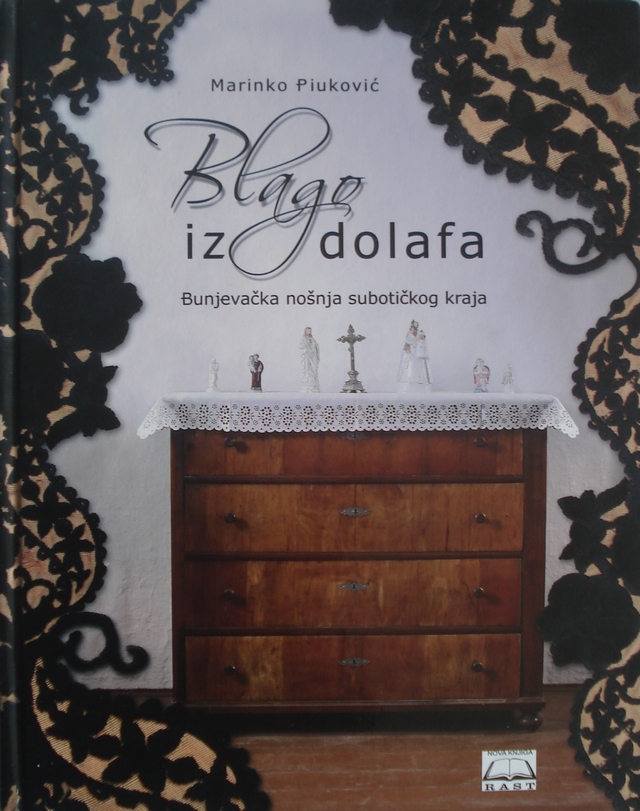
Fantastic photo-monographic book by Marinko Piuković.
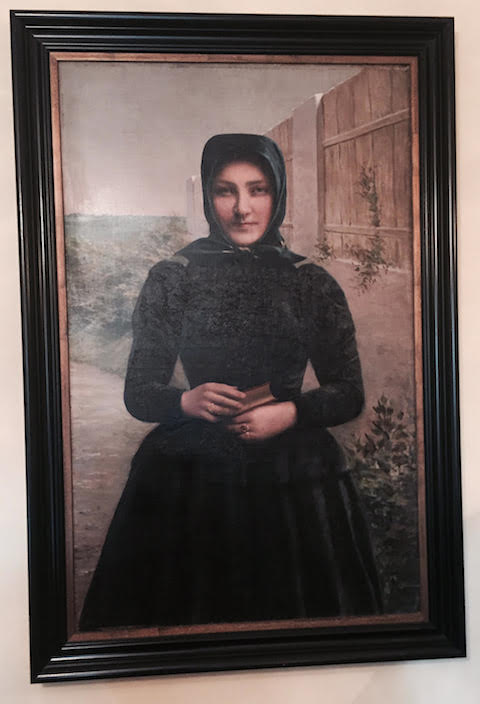
Many thanks to Dr. Elizabeta Kovač Striko (grand-daughter of Mrs. Dulić) for permission.
Lijepom našem Vukovaru (To Our Beautiful Vukovar, video), 2012.
Podvikuje Bunjevačka Vila (Bunjevci Fairy Singing), interpreted by
Antonija Piuković and Hajo Orchestra;
fantastic fashion show inspired by Croatian national costumes, from the
village of Komletinci near Vinkovci
George J. Prpic, Ph.D., Professor Emeritus of History, John Carroll University, Department of History, Cleveland, USA, was born in Banat (in the village of Djala).


Prof.dr. Luka Štilinović, objavljeno u Živjeti zajedno, br. 1/2001, župskom listiću župe Utrine u N. Zagrebu.

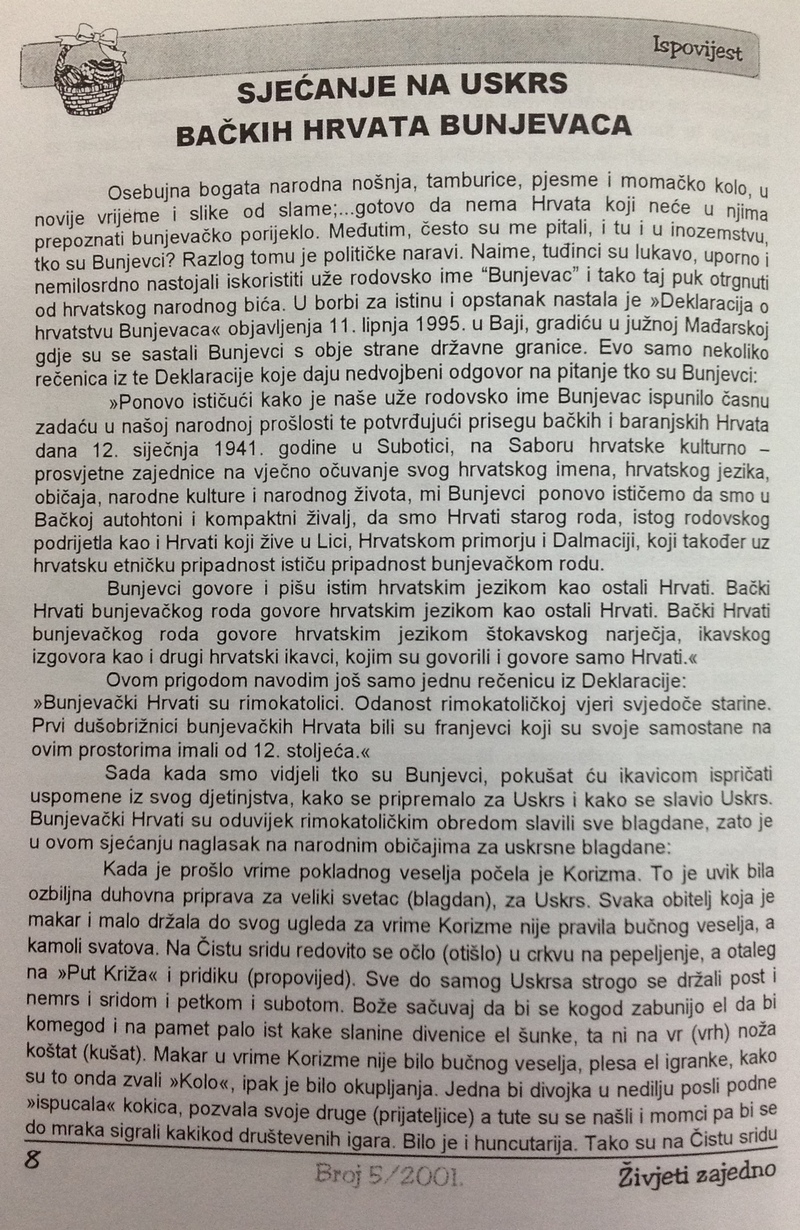
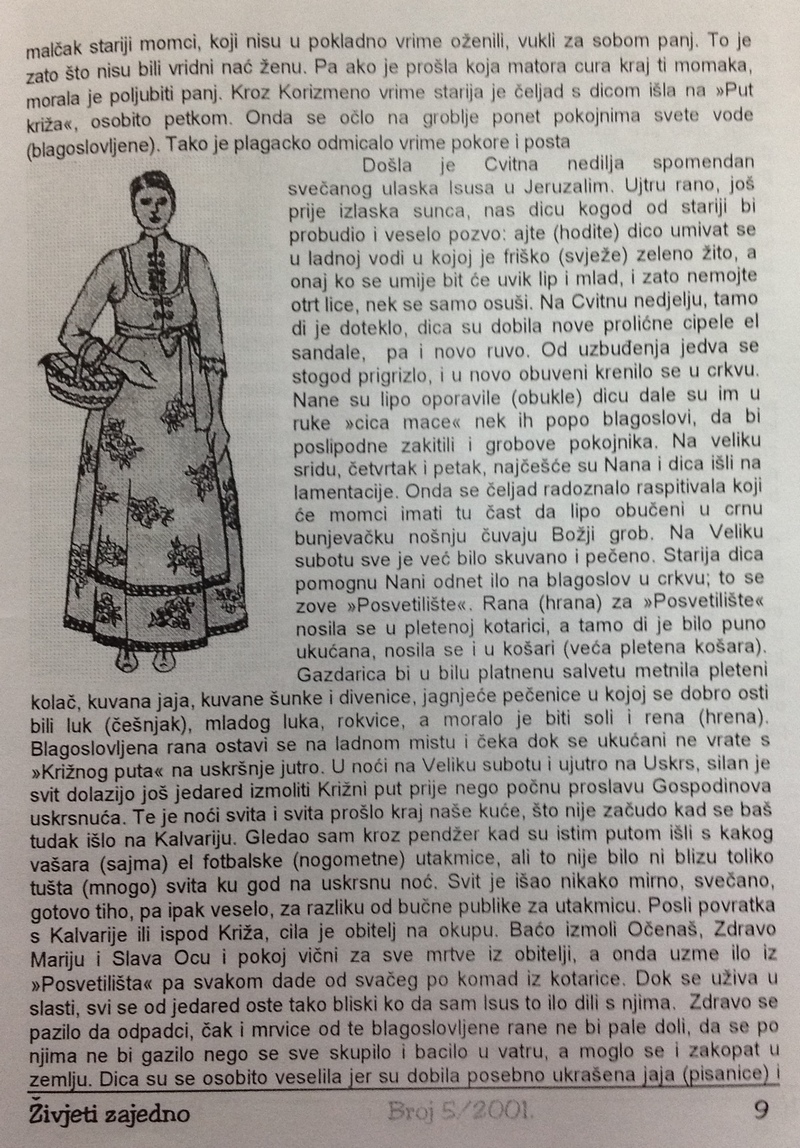
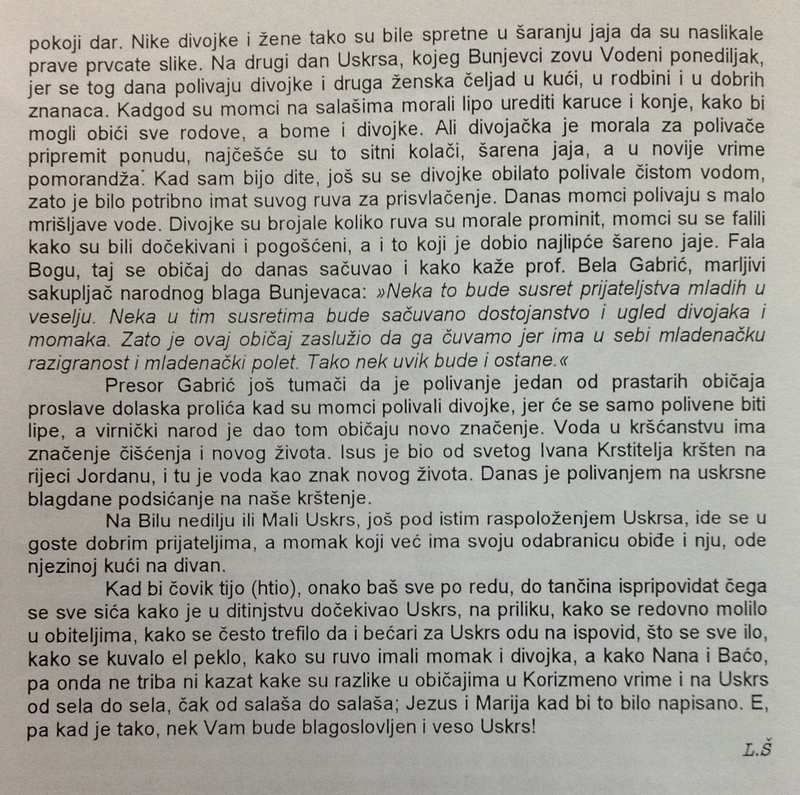
Napisao prof.dr. Luka Štilinović. Zahvaljujemo profesoru Štilinoviću na dopuštenju za objavu. D. Ž.
Dr. Luka Štilinović je ugledni profesor Sveučilišta u Zagrebu, rodom iz Subotice (1935.).
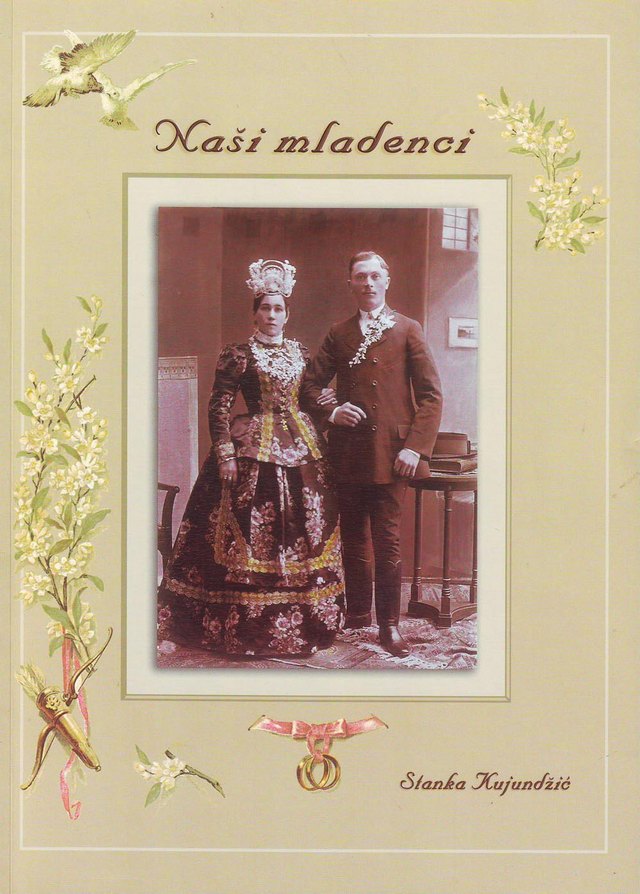
Fantastic book Naši mladenci (Our Brides) by Stanka Kujundžić, published by
Hrvatsko akademsko društvo (Croatian Academic Society) in Subotica
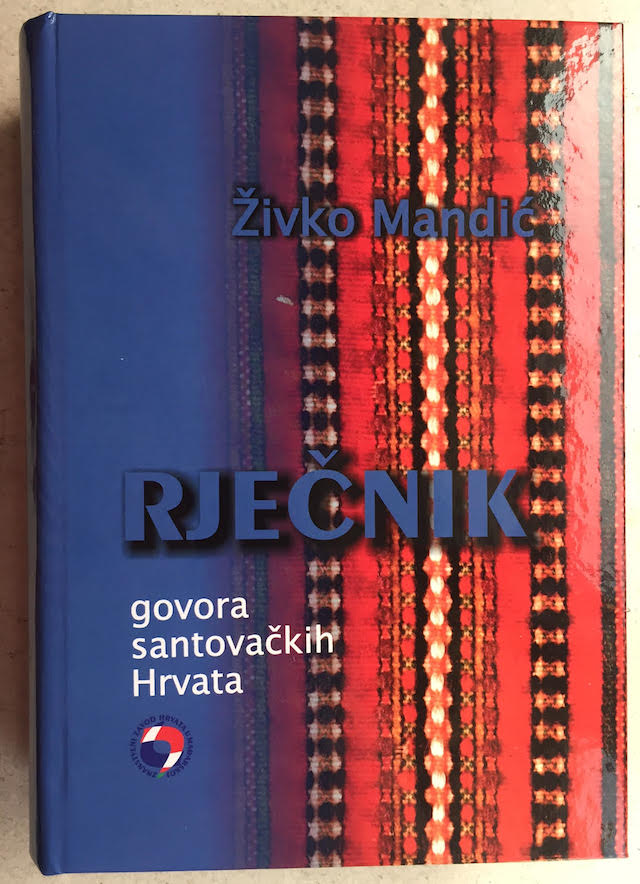
Živko Mandić: Rječnik govora santovačkih Hrvata, Znanstveni zavod Hrvata u Mađarskoj, 2016.
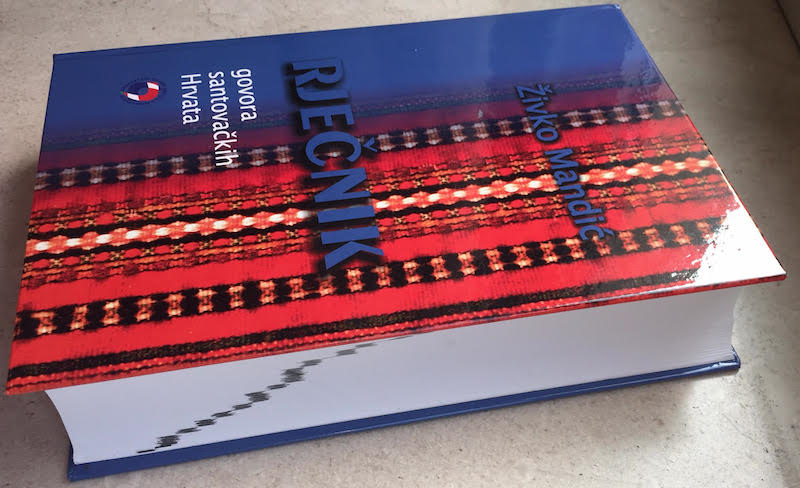
Croatian singing chori Miroljub,
Sombor, founded in 1936.
Exhibited in the Archives of the Croatian Academy of Sciences and Arts,
Zagreb
(as well as the two photos below)
HSS (Hrvatska Seljačka Stranka - Croatian Peasant Party), Sombor
Drama section of Miroljub, Sombor 1936.
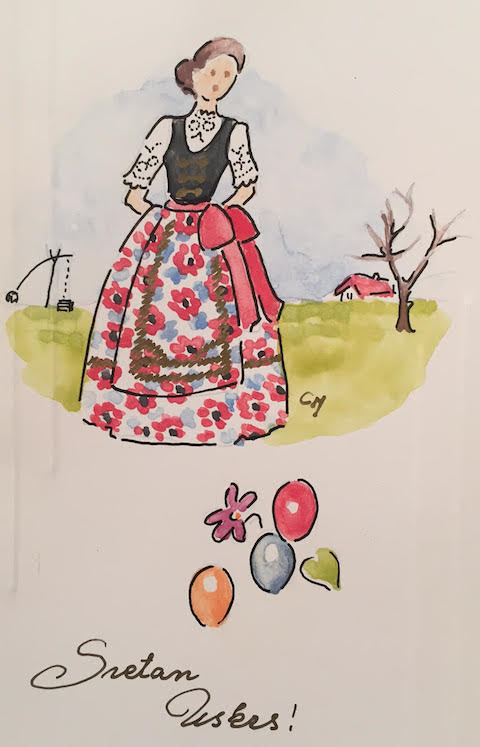
Cecilija Milanković (1926-2000), Subotica
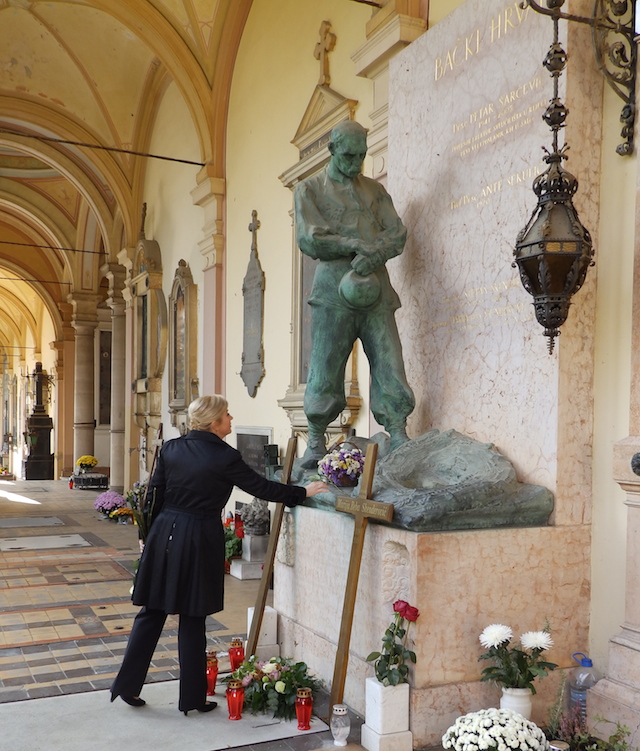
Kolinda Grabar Kitarović, November 1st 2014, at the Monument to Bačka Croats, Mirogoj, Zagreb.
Photo by Nikola Piasevoli, Zagreb.
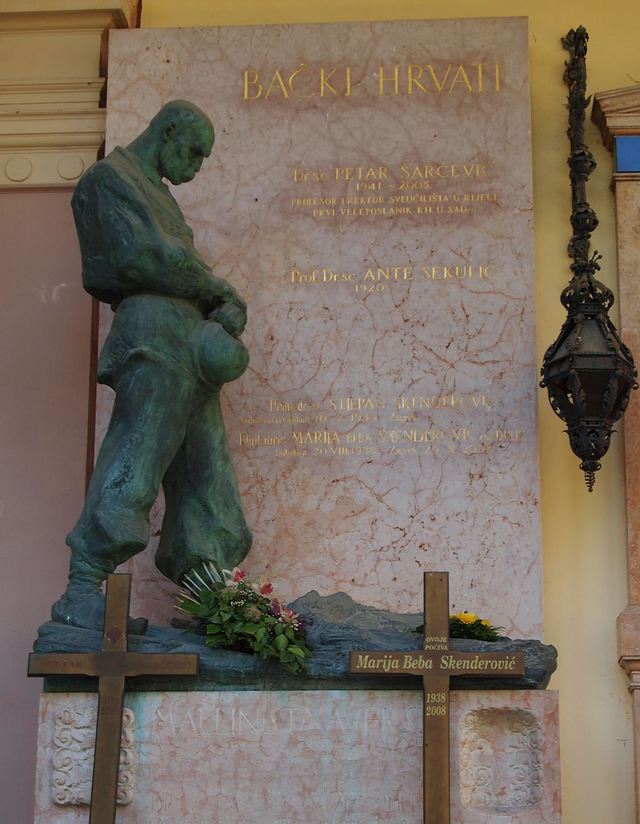
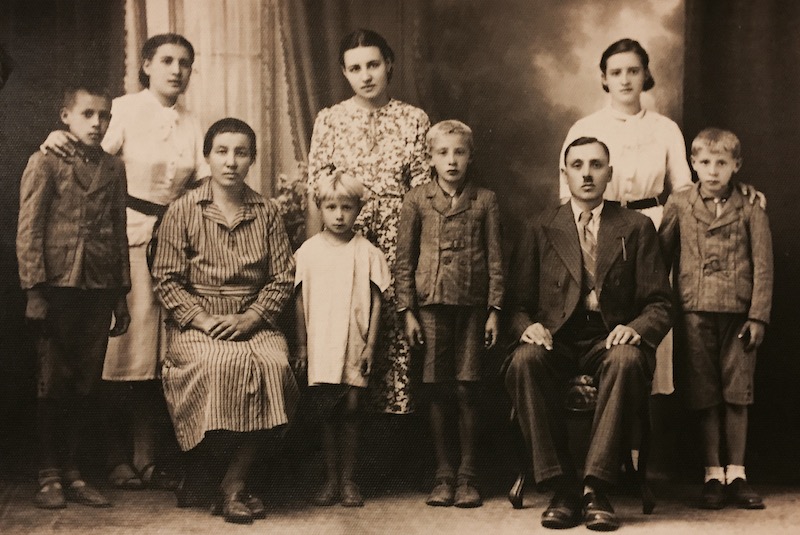
The family of Tuteković's from Nikinci:
1st line - Katarina Tutekovic, Veronika, Pavao, Franjo, Petar, 2nd line - Ivan, Marta, Marija, Tereza.
Many thanks to my dear friend Veronika Mašić (b. Tuteković, 1933-2020) for kind permission to publish this photo.
Her grandfather on the father's line is from Udbina in Lika.
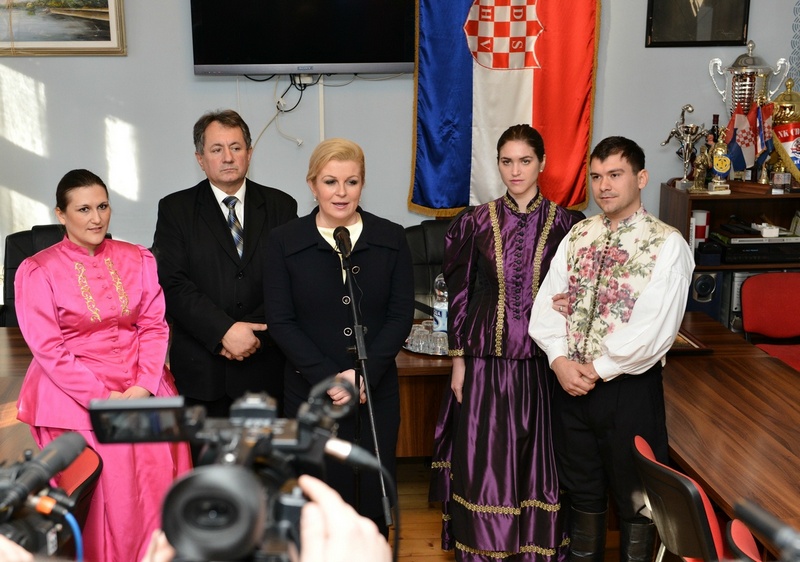
Kolinda Grabar Kitarović in Subotica


Its editor-in-chief was Emilij Laszowski. Many thanks to Stjepan Sučić for sending us the photo.
Robert Frangeš Mihanović (1872-1940), born in Srijemska Mitrovica (at that time a part of Austria-Hungary), was distinguished Croatian sculptor. He was one of the founders of Croatian Artists's Society (1897), Lado folklore society (1904), and the Art Academy (1907), all of them in Zagreb. His best known work is equestrian statue of King Tomislav in Zagreb, placed on the square named after the King, near the Central Railway Station. He carved busts of numerous persons, including Antun and Stjepan Radić.
Robert Frangeš Mihanović created alegorical reliefs on Croatian State Archives (representing Philosophy, Theology, Medicine, and Frustration). He is the author of a bust of Antun and Stjepan Radić in 1936 in their native village of Trebarjevo Desno. His very nice work, The Monument to Death, was created in 1906 for the Varaždin Cemetery.
Lit.
- Tatijana Gareljić: Robert Frangeš Mihanović, kipar (Srijemska Mitrovica 2. 10. 1872. – Zagreb 12. 1. 1940.)
- Robert Frangeš-Mihanović (HAZU)
- Hrvatski biografski leksikon
Those wishing to learn more about the history of Backa Croats (Bunjevci and Šokci) may consult the following references (especially books written by dr. Ante Sekulić, a leading expert for the history and culture of Croats in Bačka):
- Academician Ante Sekulić
(born in Tavankut
in Bačka):
- Rječnik govora Bačkih Hrvata, Institut za hrvatski jezik i jezikoslovlje, Katolički institut za kulturu, povijest i duhovnost "Ivan Antunović", Zagreb 2005, ISBN: 953-6637-26-X
- Bački Hrvati - Narodni život i običaji, Zbornik za narodni život i običaje Južnih Slavena 52, JAZU (now HAZU), Zagreb, 1991 (519 pages)
- Rasprave o jeziku bačkih Hrvata, Matica hrvatska, Zagreb, 1997 (291 pages)
- Drevni Bač, Knjižice zbornika "Kačić", Split 1978.
- Umjetnost i graditeljstvo bačkih Hrvata, Matica hrvatska, Zagreb, 1998 (171 pages) Serbianism in Podunavlje (the Danube region) 1918-1995
- Hrvatska preporodna književnost u ugarskom podunavlju do 1918., Sekcija DHK i Hrvatskog centra PEN-a za proučavanje knjizevnosti u hrvatskom iseljeništvu, Zagreb 1994, ISBN 953-6260-01-8
- Književnost podunavskih Hrvata u XX. stoljeću, Sekcija DHK i Hrvatskog centra PEN-a za proučavanje književnosti u hrvatskom iseljenistvu, Zagreb 1996, ISBN 953-6260-03-4
- Pavlinski prinosi hrvatskoj književnosti, Sekcija DHK i Hrvatskog centra PEN-a za proučavanje književnosti u hrvatskom iseljeništvu, Zagreb 1997, ISBN 953-6260-04-2
- Karmelićanski prinosi hrvatskoj književnosti, Sekcija DHK i Hrvatskog centra PEN-a za proučavanje književnosti u hrvatskom iseljeništvu, Zagreb 2001, ISBN 953-6260-07-7
- Osobna imena, prezimena i nadimci bačkih Hrvata, Katolički institut za kulturu, povijest i duhovnost "Ivan Antunović", Subotica 2005.
- Bački Hrvati u XX. stoljeću, Hrvatska kulturna zaklada i Hrvatsko Slovo, 2010.
- Izabrane pjesme, izabrao i uredio Milovan Miković, Katolički institut za kulturu, povijest i duhovnost "Ivan Antunović", Subotica 2004., ISBN 86-7450-020-X
- Matija Evetović: Kulturna povijest bunjevačkih i šokačkih Hrvata, Hrvatska Riječ, Subotica 2010. (uvodna riječ i prva glava)
- Petar Pekić: Povijest Hrvata u Vojvodini, Matica hrvatska, Zagreb, 1930.
- Nikola Andrić: Hrvatske narodne pjesme, Haremske pričalice i Bunjevačke groktalice [PDF], Matica hrvatska, Zagreb 1942.
- The Croatian Bunjevci, by Evetović-Pekić-Sokčić, Croatian Almanac, 1986
- Etnografska zbirka Bunjevci, Gradski muzej Senj
- Lipe riči, iz književnosti Bunjevačkih Hrvata, 2 (Introduction by Ante Sekulić), Zagreb, DHK, Hrvatski centar PEN-a, Matica hrvatska, 1994., ISSN 1330-4941
- Dužijanca
- 100. obljetnica rođenja Alekse Kokića
- Milovan Miković: Klasje naših ravni, Subotica; fotografije naslovnica časopisa
- Hrvatska riječ
- Zavod za kulturu Hrvata
- Tomislav Žigmanov: Bunjevački put križa: Za osobnu pobožnost virujućeg svita, Katolički institut za povijest i duhovnost "Antunović", Subotica, 2013. ISBN 978-86-7450-056-9
- Croatian cultural society Vladimir Nazor, town of Sombor
- Božićni običaji kod bačkih Hrvata - Bunjevaca
- Petar Šarčević, Naco Zelić: Hrvatska pisana riječ u Bačkoj,
Zagreb 2015., ISBN 978-953-6562-76-3, 535 str.
- Naco
Zelić:
- Protiv zaborava, Hrvatsko kulturno prosvjetno društvo "Matija Gubec" Tavankut (1946.-1996.), Zagreb, 2000., ISBN 953-6526-20-8
- Hrvatsko proljeće i Bački Hrvati, Matica hrvatska, Subotica 2009., ISBN 948-86-87705-00-5
- Publikacije Bačkih Hrvata, popis izdanja od 1901. do 2007., Nacionalna i sveučilišna knjižnica u Zagrebu, Zagreb, 2009.
- Slikovali smo se, stare fotografije, izvor podataka o Bunjevačkoj narodnoj nošnji, Stih, Zagreb 2011, ISBN 978-953-6959-69-3 (može se naručiti kod g. Zelića na tel. +385 1 3821 907, ili e-mail naco.zelic@zg.t-com.hr)
- Zlata Gvozdić-Filjak, Juraj Lončarević: Srijemska kalvarija Hrvata, Znanje, Zagreb, 1995
- Marko Kljajić: Kako je umirao moj narod (How Was My People Dying), HRID, Subotica, 1997.
- Josip Temunović: Bilježnica za povijest Bunjevačkih i Šokačkih Hrvata, Hrvatska riječ, Subtoica 2009., ISBN 978-86-85105-13-1
- Marija Maftej-Dulić: Božićni običaji kod bačkih Hrvata - Bunjevaca
- Zvonik, katolički list
- Stranica za duhovna zvanja Subotičke biskupije
- Demokratski savez Hrvata u Vojvodini (DSHV)
- Mi, doljepotpisani pripadnici Bunjevačkog roda... (o dijalektalnom ikavskom govoru bunjevačko-šokačkih Hrvata)
- Matija Gubec - Tavankut
- Croatian national costumes in Monoštor on the left bank of Danube, prof. Marija Šeremešić
- www.bunjevac.com (rather slow download)
- Sanja
Vulić:
- Vitezovi hrvatskoga jezika u Bačkoj, MH Subotica, 2009.
- Odnos dijalekta i standardnoga jezika s posebnim osvrtom na Hrvate u Bačkoj
- Identitet Bačkih Hrvata (Robert Skenderović, ur.) Zbornik radova međunarodnog skupa održanog u Zagrebu od 27. do 28. studenoga 2008., Hrvatski institut za povijest, Hrvatsko akademsko društvo, 2010.
- Robert Skenderović: Povijest podunavskih Hrvata
(Bunjevaca i Šokaca) od doseljavanja do propasti Austri-Ugarske
monarhije, Subotica - Slavonski Brod, 2017. ISBN 978-953-8102-14-1
- Godišnjak za znanstvena istraživanja, Subotica (redoviti godišnji zbornik radova), [PDF-2009]
- Jasna Ivančić: Albe Vidaković - o stotoj obljetnici rođenja i pedesetoj obljetnici smrti (1914.-1964.), Godišnjak za znanstvena istraživanja, 2013., 239-295
- Mario Bara: "Kolonizacija". Leksikon podunavskih Hrvata – Bunjevaca i Šokaca, sv. 13, Hrvatsko akademsko društvo, Subotica 2017, str. 26-29.
- Mario Bara, Tomislav Žigmanov: Hrvati u Vojvodini u povijesti i sadašnjosti - osnovne činjenice, Zavod za kulturu Vojvođanskih Hrvata, Subotica 2009., ISBN 978-86-87831-02-5
- Marinko Piuković: Blago iz dolafa, Bunjevačka nošnja subotičkog kraja, Nova knjiga RAST, 2012.
- Jelka Mihaljev: Proletilo dvanaest golubova: Predajna kultura baranjskih Hrvata, Osijek 2012., 374 str.
- Hrvatsko nacionalno vijeće
- Zajednica prognanih Hrvata iz Srijema, Bačke i Banata
- Društvo vojvođanskih i podunavskih Hrvata
- Hrvatsko akademsko društvo, Subotica
- Biografski leksikon
Hrvata
istočnog Srijema,
Libera editio d.o.o i Hrvatsko
akademsko društvo, Zagreb
- Subotica, ISBN 978-953-7546-06-8 (cjelina), predstavljanje
- Sv. 1, A - Fur, 212 str., 2011.
- Andrija Anišić: Vjersko moralna obnova braka i obitelji : Model opstanka i napretka naroda u djelima Ivana Antunovića, Katolički insititut za kulturu, povijest i duhovnost "Ivan Antunović", Subotica, 2013. ISBN 978-86-7450-058-3
- Lazar Ivan Krmpotić: Veliko obiteljsko stablo Dulićevih, Birografika d.o.o. Subotica, 2005., ISBN 86-83601-13-7
- Lajčo Perušić: Tragovima predaka / Povijest loze Perušić, vlastita naklada, Zagreb, 2014., ISBN 978-953-58073-0-8
- Bunjevci (Wikipedia)
- Ana Lederer
- Vinko Žganec: Izvorne narodne pesme (sic!) iz Sombora i okoline, Balkanološki institut SANU (= Serbian Academy), Beograd 2019; Vinko Žganec (1890-1976, distinguished Croatian ethnomusicologist) provided a different title: Narodne popijevke iz Sombora i okolice. (Pripremio za tisak Miroslav Vuk, Zagreb 1979.) This change of the original Žganec's title shows us a gross misrepresentation by the SANU. See [PDF, pp. 63-69] for more details.
- Dr. Vinko Žganec:
- Narodne popijevka iz Bačke, Baranje i Srijema,
svezak I. (od broja 1. do 70.) sakupljene od 1932. do 1938.
- Narodne popijevka iz Bačke, Baranje i Srijema,
svezakII. (od broja 71. do 143.) Sakupljene od 1932. do 1938.
- Narodne popijevka iz Bačke, Baranje i Srijema,
svezak I. (od broja 1. do 70.) sakupljene od 1932. do 1938.
- Stanka Kujundžić: Naši mladenci, Bunjevačke svadbene nošnje na fotografijama od 1870. do 1970. godine, Svadbeni običaji Hrvata Bunjevaca u XX. stoljeću, Subotica, 2004.
- Bunjevci, Vrio mudrosti
- Dražen Prćić: Horvacki Bačka 1901-1939, Minerva, Subotica, ISBN 978-86-7099-101-9
- Hrvati u Banatu:
doseljavanje, tradicijska baština i identitet, Hrvatska matica
iseljenika, Zagreb 2022
- Znanstveni zavod
Hrvata u Mađarskoj
- Knjige
mađarskih Hrvata
- Živko Mandić (Zsivko Mandics)
- Latice ivančice, narodne pripovijetke šokačkih Hrvata u Madžarskoj, 1984.
- Povijesna
antroponimija bunjevačkih Hrvata u Mađarskoj,
1987.
- Osobna imena
bunjevačkih Hrvata u Mađarskoj, 2000.
- Prilog povijesti
budimskih i peštanskih Hrvata, Hrvati u
Budimu i Pešti (zbornik radova), ur. Stjepan Lukač, Budimpešta
2001.,
- Antroponimija i
toponimija bunjevačkih Hrvata u Madžarskoj,
2005. (uredio Ernest Barić)
- Hrvatska imena
naseljenih mjesta u Madžarskoj, Folia
onomastica Croatica, Vol. No. 15, 2006.
- Šokica sam i bit ću dovika: santovački bećarci, Croatica, Budimpešta, 2009.
- Rječnik govora santovačkih Hrvata, 2016., ISBN:
978-963-89731-2-2
- Leksikon
podunavskih Hrvata - Bunjevaca i Šokaca,
Hrvatsko akademsko društvo (HAD), Subotica, 2004,
ISBN 978-86-85103-03-2
- 1. dio (AB), 60 str. (prošireno izdanje 2008.)
- 2. dio (B-Baž), 77 str.
- 3. dio (Be-Br), 67 str.
- 4. dio (Bu), 73 str.
- 5. dio (C-Ć), 65 str.
- 6. dio (D), 104 str.
- 7. dio (DŽ-F), 107 str.
- 8. dio (G), 76 str.
- 9. dio (H), 229 str.
- 10. dio (I), 110 str.
- 11. dio (J), 121 str.
- 12. dio (K-Knj), 200 str.
- 13. dio (Ko-Kr), 162 str.
- 14. dio (Ku-Kv), 102 str.
- 15. dio (L-Mal), 164 str.
- 16. dio (Malj-Mu), 311 str. (kratki
opis, HKS)
Croatia - overview of its History, Culture and Science
